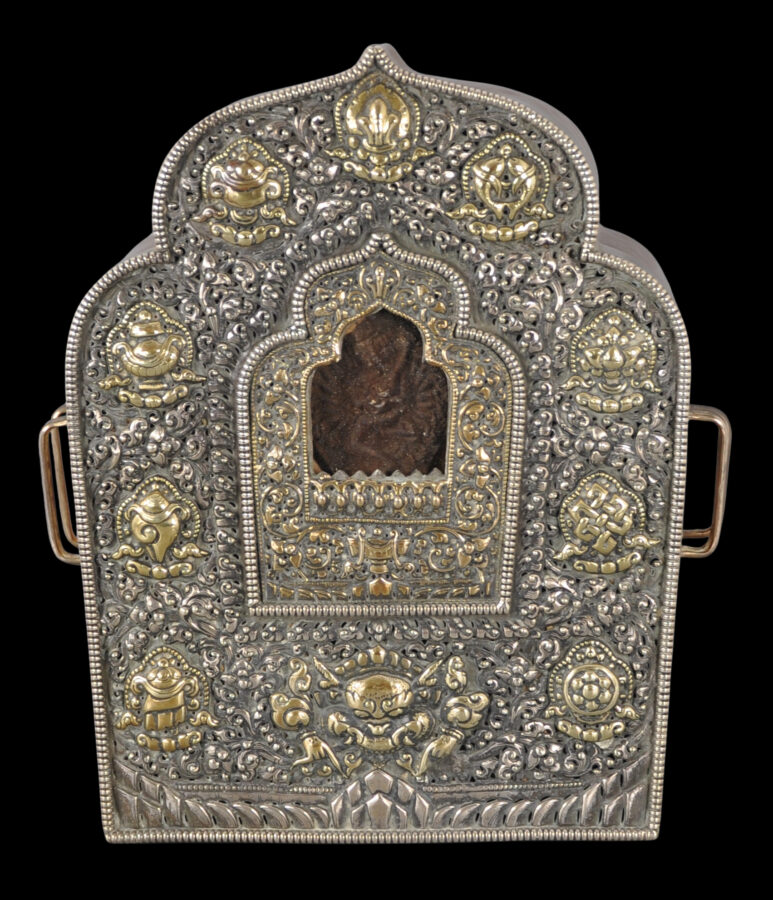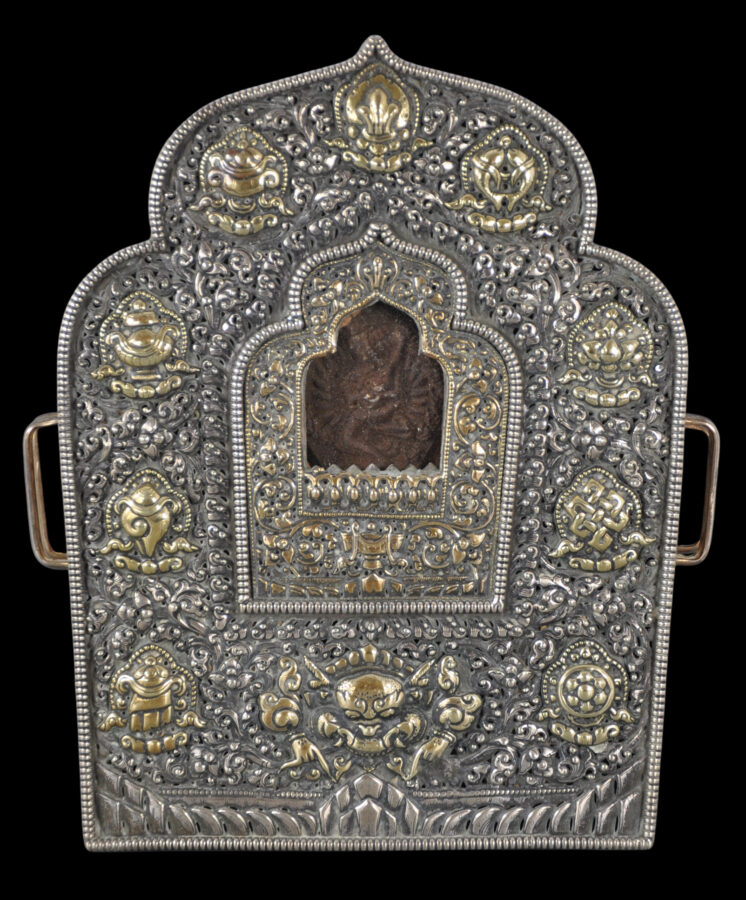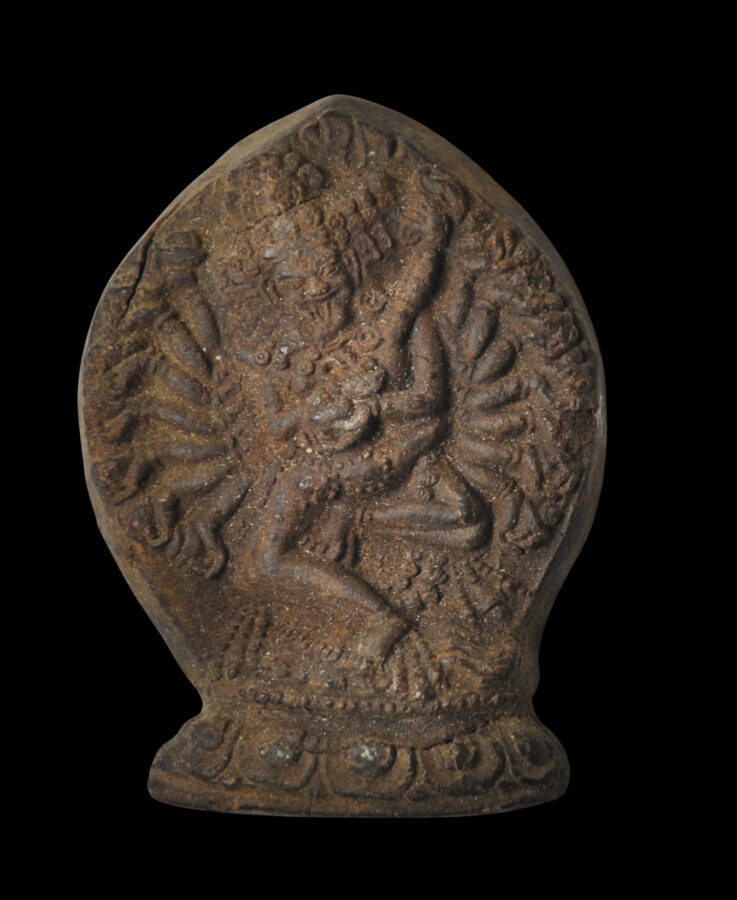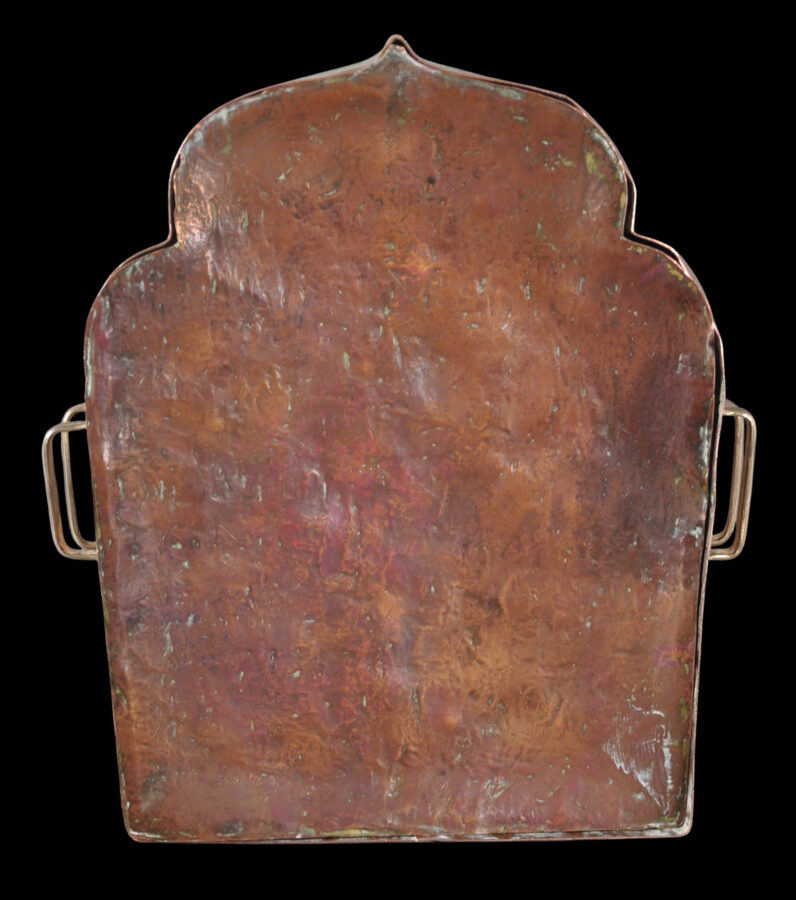Enquiry about object: 9372
Tibetan Silver, Gold & Copper Ga’u Box with Enclosed Tsa-Tsa
Kham Province, Derge, Tibet late 18th-early 19th century
height: 18.1cm, width: 16cm, depth: 6.6cm, weight: 616g
Provenance
private collection, London.
This fine example of a Tibetan ga’u or portable talismanic shrine box is of trefoil shape and comprises a finely worked, silver front decorated with ten gold or gilded plaques and a further gold or gilded plaque around the central ‘window’, which is set with glass.
Eight of the gold/gilded plaques are decorated with each of the Eight Auspicious Signs of Tibetan Buddhism.
A kurtimukha or protective monster mask is beneath the window, and over it, is a wish-fulfilling jewel vase.
The background is exquisitely rendered and shows delicate floral and leaf scrollwork that is typical of Eastern Tibet work.
The window at the front is of arched form, and a small moulded clay tsa-tsa of a deity in yab-yum (sexual congress) is visible through the window. If the cover from the back of the box is removed then it can be seen that the tsa-tsa is held in place with old scraps of an Indian-English-language newspaper dated 1936, and a Tibetan silk prayer scarf (khata or khatag). This suggests that the ga’u came through India and was probably brought there by Tibetan or Nepalese curio sellers in the 1930s where it was acquired by a British colonial administrator, and subsequently brought back to the UK.
The sides and backing plate of the ga’u are of hammered copper, which has a rich-red-brown patina.
A pair of rectangular silver lugs on each side to allow suspension – such a box would have been worn on the chest of a devotee to provide protection when travelling.
Related examples with gilding and ‘window’s are illustrated in Ghose (2016, p. 45).
The front and sides of the box have much wear from ritual handling.
Ga’us are encountered only in Tibet or areas influenced by Tibetan Buddhism, such as Bhutan. No other Buddhist regions have anything like them. They were worn when travel was undertaken but otherwise were stored on the domestic altar.
The example here is in fine condition and has obvious age.
References
Clarke, J., Jewellery of Tibet and the Himalayas, V&A Publications, 2004.
Ghose, M. (ed.), Vanishing Beauty: Asian Jewelry and Ritual Objects from the Barbara and David Kipper Collection, Art Institute of Chicago, 2016.
Pal, P., Art of the Himalayas: Treasures from Nepal and Tibet, Hudson Hills Press, 1991.
Proser, A., (ed.), Pilgrimage and Buddhist Art, Asia Society Museum/Yale University Press, 2010.







